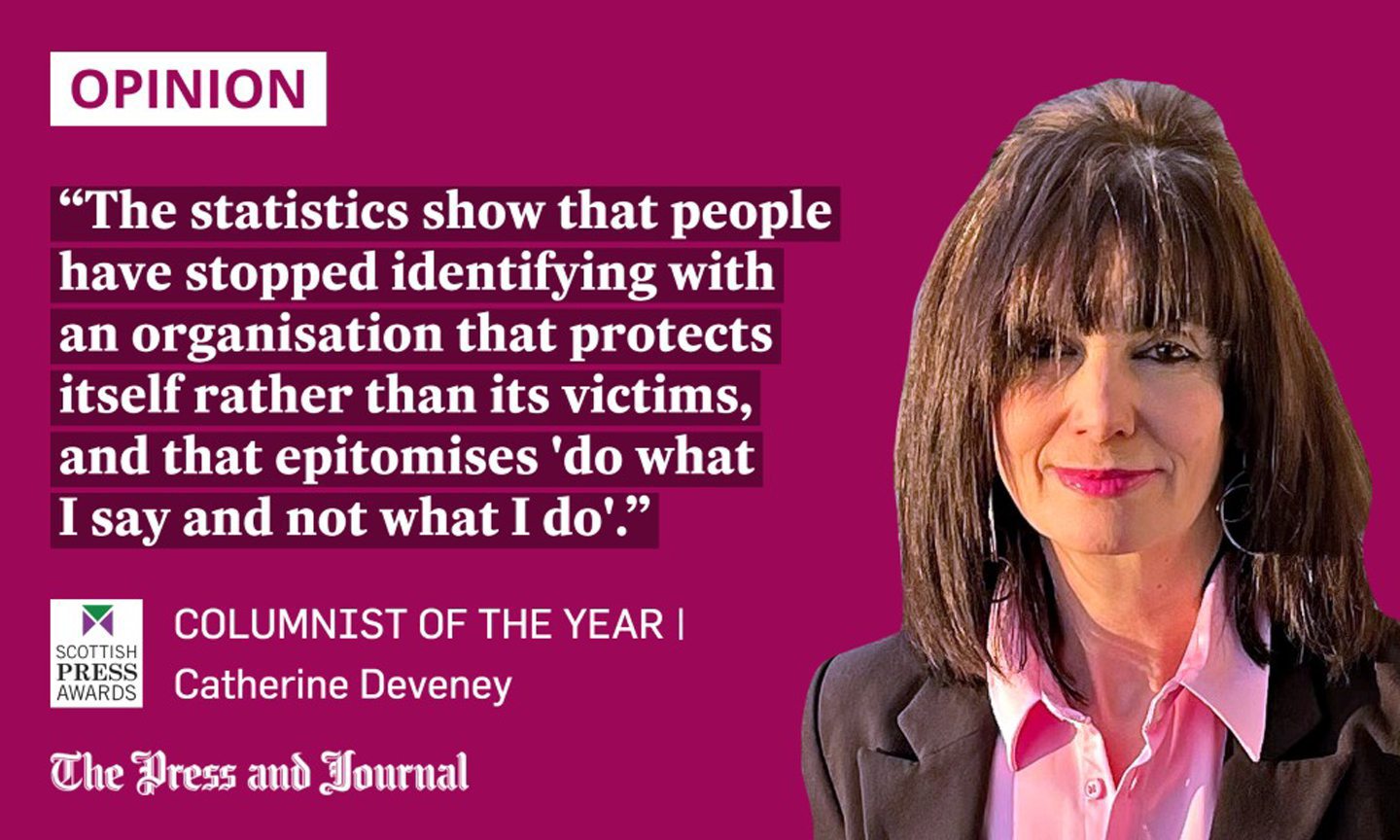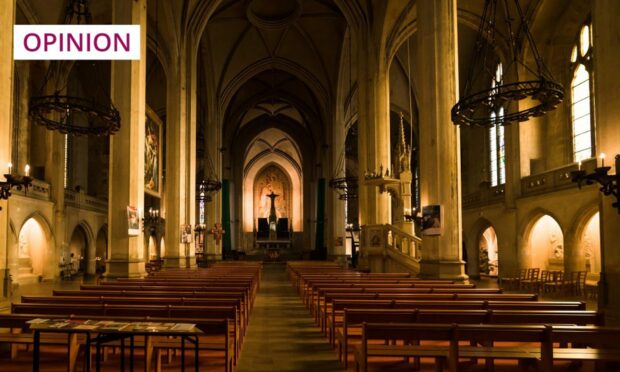It’s little surprise that faith in organised Christianity is waning across Britain, but hope that there is something greater to believe in will never be extinguished, writes Catherine Deveney.
“I wonder who will be the last, the very last, to seek this place for what it was,” Philip Larkin wrote, in his 1955 poem, Church Going.
The first time I read those words, they seemed fanciful. Churches becoming obsolete? Yet, Larkin predicted that they would eventually be visited only by antique-hunters, or “Christmas addicts”, searching for “a whiff of gown-and-bands and organ-pipes and myrrh.”
As the Christian church’s great festival of Christmas approaches, it seems he might be right; fewer of us will be searching for the baby in the manger than ever before.

This week, it was reported that Christians in England and Wales have become the minority, falling below half the population for the first time. Meanwhile, according to the 2021 census, the number of people with “no religion” has trebled since the millennium.
The picture in Scotland differs slightly. Religious belief has dropped, but, while almost two million claim no religion, close to three million claim a Christian affiliation of one kind or another. Although, one suspects, the “another” makes up the cultural Christians, the Billys and Tims, whose idea of Protestantism or Catholicism involves a once-a-week pilgrimage to Ibrox or Parkhead.
Church leaders have been architects of their own decline. Their handling of abuse scandals has shown their inability to demonstrate, in any meaningful way, the Christian values they profess. Larkin’s words were prophetic when he described “a shape less recognisable each week, a purpose more obscure.”
The historical Christ was a revolutionary figure, more a Che Guevara than a Prince of Pomp. How, then, did his radical, social justice message get translated into a parade of – mainly – elderly men in robes and mitres, pontificating on the nation’s sex lives, while covering up the decidedly murky activities that some of them were secretly pursuing?
Pontifications about the sexuality of Christ himself
This week saw a different twist: pontifications about the sexuality of Christ himself. Joshua Heath, a junior research fellow, gave a sermon at evensong in Trinity College, Cambridge, during which he displayed renaissance and medieval paintings of the crucifixion.
A vagina looks like a wound? Either Joshua needs to get out more, or I need to consult a doctor immediately
He honed in on the wound in Christ’s side. It was, he speculated, shaped like a vagina, which sounds a bit like those wackos who see the face of Jesus in their pepperoni pizza, or the Madonna in the swirl of their mayonnaise. A vagina looks like a wound? Either Joshua needs to get out more, or I need to consult a doctor immediately.
“In Christ’s simultaneously masculine and feminine body in these works… his body is also the trans body,” Heath apparently concluded. Well! I am sure someone will give him another PhD for it, but you can imagine how well the trans Christ went down in England’s green and pleasant land.
Save your tears for something worth crying over
There were tears from the congregation, and shouts of heresy, and, quite honestly, it’s hard to work out which bit of all this is the most objectionable.
Is it the notion that women are now relegated to being a gash in a man’s side? Or the fact that we can’t actually say that said gash represents women because, obviously, that’s offensive to the trans community, and we must now say it represents “people with a vagina”.
Or, is it the fact that religious folk were so insecure, they were actually crying over irrelevant, pseudo-intellectual tosh that reduces a supreme spirit to a body and a gender? God the Father, God the Son and God the Holy Rocky Horror Ghost…
Frankly, I’d be so thrilled that God existed, I’d accept “Him” in a skirt, velvet knickerbockers, or top hat and tails. So, I suggest the congregation save their tears for something worth crying about, like abused children, the poor trying to heat and eat, the oppressed in war-torn lands, or the psychological distress of the bereaved and lonely. Things, in other words, that Christ might have actually cared about.
Maybe search for meaning will eventually lead us back to church
“Back at the door I sign the book, donate an Irish sixpence, reflect the place was not worth stopping for,” Larkin wrote all those years ago, capturing the irrelevance of the “frowsty barn”, with its oppressive silence and stagnant ideas.
The silence has only got louder, the irrelevance more marked. The statistics show that people have stopped identifying with an organisation that protects itself rather than its victims, and that epitomises “do what I say and not what I do”.
Whether you tick the census atheist box with certainty, or the religious box with hope, there is a human search for meaning that even Larkin felt
And, yet, in December, it is easy to find the mind wandering to the Christmas story with a heartfelt wistfulness. Whether you tick the census atheist box with certainty, or the religious box with hope, there is a human search for meaning that even Larkin felt.
“A serious house on serious earth it is, in whose blent air all our compulsions meet,” he wrote. Going, going, gone. But, when it is, those compulsions will remain; a hunger for meaning that may prompt Church Coming rather than Church Going – a new building rising from the discarded bricks of the old.
Catherine Deveney is an award-winning investigative journalist, novelist and television presenter, and Scottish Newspaper Columnist of the Year 2022













Conversation